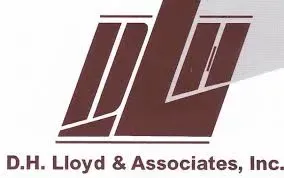Top 3 Recommended Business Policies
Index
Understanding Commercial Flood Insurance
Specifics of Maryland Commercial Flood Insurance
The Process of Getting Commercial Flood Insurance in Maryland
Coverage and Limitations of Commercial Flood Insurance
Cost of Commercial Flood Insurance in Maryland
Frequently Asked Questions about Maryland Commercial Flood Insurance
Contact Us
Flooding can have devastating effects on commercial properties, especially in areas prone to heavy rainfall. Maryland, known for its varied geography, is not immune to such weather events. Understanding the intricacies of commercial flood insurance is crucial for business owners looking to protect their investments. This article covers everything you need to know about commercial flood insurance in Maryland, from definitions and coverage specifics to the process of obtaining it.
Understanding Commercial Flood Insurance
Commercial flood insurance serves as a financial safety net for businesses facing the risk of flooding. Whether due to natural disasters, broken water mains, or other unforeseen events, having this insurance can minimize the financial strain on business operations post-flooding.
Definition and Importance of Commercial Flood Insurance
Commercial flood insurance specifically protects businesses against damages caused by flooding. Unlike standard property insurance policies, which typically exclude flood damage, this type of insurance provides coverage for the physical structure, inventory, and business personal property. The importance of this insurance cannot be overstated, as flood-related damages can result in significant costs that may threaten the very existence of a business.
In Maryland, where certain areas have been classified as flood-prone, commercial flood insurance becomes even more critical. Business owners in these regions should prioritize obtaining coverage to safeguard their assets. Additionally, the impact of flooding can extend beyond immediate physical damage; it can disrupt supply chains, displace employees, and lead to a loss of customer trust, making comprehensive coverage a vital component of a business's risk management strategy.
How Commercial Flood Insurance Works
This insurance operates on a policy basis, where businesses pay a premium in exchange for coverage up to a specified limit. When a flood occurs, the business can file a claim with the insurance provider to cover the repair costs, replacement of damaged property, and sometimes even lost income during the recovery period.
However, it's essential to note that there is typically a waiting period before coverage begins, often around 30 days. Therefore, business owners should plan and secure their insurance before potential flooding threats loom on the horizon. Understanding the specific terms and conditions of a policy is crucial, as coverage can vary significantly between providers. Some policies may also offer additional endorsements or riders that can enhance coverage, such as protection for business interruption or extra expenses incurred during the recovery process, which can be invaluable in maintaining operations during challenging times.

Specifics of Maryland Commercial Flood Insurance
Maryland has particular regulations and guidelines governing commercial flood insurance, largely influenced by the Federal Emergency Management Agency (FEMA). Understanding these factors is vital for business owners in the state.
State Regulations and Requirements
Maryland adheres to federal guidelines, requiring businesses located in high-risk flood zones to carry flood insurance, particularly if they have loans backed by the government. This is part of a broader initiative to mitigate the damages caused by flooding and ensure that property owners can recover swiftly.
Additionally, the Maryland Department of the Environment (MDE) offers resources and guidance related to floodplain management, helping businesses comply with state regulations while maintaining adequate insurance coverage. The MDE also conducts regular assessments of flood risk areas, which can influence insurance rates and availability. Business owners are encouraged to stay informed about these assessments to better understand their potential exposure and the necessity of flood insurance in their specific locations.
Understanding Maryland's Flood Zones
Maryland’s flood zones are categorized into various classifications, such as high-risk areas (Zone A and Zone V) and moderate- to low-risk areas (Zone B and Zone C). Understanding these distinctions is crucial as they directly affect insurance requirements and premiums.
Properties located in high-risk areas must purchase flood insurance, while those in lower-risk zones may have optional coverage. However, it's worth mentioning that even properties outside designated zones can experience flooding, making comprehensive insurance an advisable consideration for all business owners. Furthermore, businesses should also be aware of the potential for changes in flood zone designations, which can occur due to environmental factors or urban development. Keeping abreast of such changes can help businesses adjust their insurance policies proactively, ensuring they are adequately protected against unforeseen flood events.
Moreover, Maryland's coastal regions are particularly vulnerable to flooding due to storm surges and rising sea levels, which adds another layer of complexity to flood insurance considerations. Business owners in these areas should not only evaluate their immediate flood risk but also consider the long-term implications of climate change on their insurance needs. Engaging with local insurance agents who specialize in flood coverage can provide valuable insights into the best options available, tailored to the unique risks faced by Maryland businesses.
The Process of Getting Commercial Flood Insurance in Maryland
Acquiring commercial flood insurance may seem complex, but breaking it down into manageable steps can simplify the process.
Steps to Acquire Commercial Flood Insurance
- Assess Your Risk: Identify your property’s flood zone and assess the level of risk.
- Shop for Quotes: Compare quotes from multiple insurers to find the best coverage at optimal rates.
- Review Policy Options: Understand the details of coverage, limits, and exclusions for each policy.
- Complete the Application: Fill out the necessary paperwork accurately and thoroughly.
- Pay the Premium: Once approved, pay the required premium to activate your coverage.
Throughout the process, consulting with an insurance agent who specializes in commercial flood insurance can provide valuable insights and assistance. These professionals can help you navigate the often intricate details of flood insurance policies, ensuring that you understand the nuances that could impact your coverage. Additionally, they can assist in tailoring a policy that aligns with your specific business needs, taking into account factors like the nature of your operations and the unique risks associated with your location.
Choosing the Right Insurance Provider
Selecting the right insurance provider is critical to ensuring that your business is adequately protected. When evaluating potential insurers, consider factors such as:
- Experience and reputation in the industry.
- The level of customer support available.
- Claims process efficiency and satisfaction ratings.
- Financial stability and ratings from industry standard services.
By doing thorough research and possibly seeking recommendations from fellow business owners, you can make a well-informed choice that best suits your needs. Furthermore, it’s beneficial to review customer testimonials and case studies that highlight how insurers have handled claims in the past. This can give you insight into their reliability and responsiveness during critical times. Additionally, consider the insurer's willingness to provide educational resources or risk management advice, as these can be invaluable in helping you minimize potential losses and enhance your overall preparedness for flooding events.
Coverage and Limitations of Commercial Flood Insurance
Understanding what a commercial flood insurance policy covers and its limitations is vital. This knowledge will help you customize your policy to best suit your business needs.
What Commercial Flood Insurance Covers
Generally, commercial flood insurance covers the following:
- Building structure, including the foundation, floors, and walls.
- Electrical and plumbing systems.
- Inventory and equipment necessary for operations.
- Business personal property such as furniture and fixtures.
These elements are crucial for restoring business functionality after a flood event. Ensuring that your policy adequately reflects the value of these items will ensure swift recovery when needed. Additionally, many policies may also cover the costs associated with cleanup and debris removal, which can be significant after a flood. This aspect is often overlooked but can greatly impact the overall recovery process, allowing businesses to resume operations more quickly and with fewer interruptions.
Common Exclusions and Limitations
Despite its comprehensive nature, commercial flood insurance comes with specific exclusions. Common limitations include:
- Damage from mold or mildew unless caused directly by flooding.
- Damage to vehicles and boats.
- Improvements or renovations to the property made after the policy was initiated.
It is essential to read the policy documents thoroughly and consider adding additional coverage or riders for items that may not be included in the standard policy. Furthermore, businesses located in high-risk flood zones may face higher premiums or stricter underwriting criteria, making it crucial to assess the risk level accurately. Engaging with an insurance professional can provide valuable insights into potential gaps in coverage and help tailor a policy that not only meets regulatory requirements but also addresses the unique risks faced by your business, ensuring comprehensive protection against the unpredictable nature of flooding.

Cost of Commercial Flood Insurance in Maryland
The cost of commercial flood insurance can significantly vary depending on several factors unique to each business. Understanding these factors will help in budgeting for this essential coverage.
Factors Influencing the Cost
- Property location and its flood zone classification.
- The age and type of building.
- Coverage limits selected and deductible amounts.
- History of flooding or claims associated with the property.
Business owners should consider these variables when requesting quotes from insurers to get a more accurate estimate for their specific situation. Additionally, the local climate and weather patterns can also play a significant role in determining flood risk. For instance, areas prone to heavy rainfall or hurricanes may face higher premiums due to the increased likelihood of flooding events. Understanding the historical data of your specific location can provide valuable insights when discussing coverage options with your insurance agent.
Tips to Lower Your Insurance Premium
While commercial flood insurance may seem costly, there are various strategies you can implement to reduce premiums:
- Elevate the property or make structural improvements to minimize flood risk.
- Install flood vents to allow water flow and mitigate potential damages.
- Implementing a drainage system to redirect water away from the property.
- Bundling flood insurance with other types of insurance for potential discounts.
Taking proactive measures will not only enhance your property's resilience to flooding but can also lead to lowered insurance costs. Furthermore, regularly reviewing and updating your insurance policy can ensure that you are not overpaying for coverage that no longer reflects your business's needs. Engaging with a knowledgeable insurance broker can provide additional insights into available discounts and help tailor your policy to fit your unique situation, ensuring you are adequately protected without breaking the bank.
Frequently Asked Questions about Maryland Commercial Flood Insurance
As with any insurance product, questions and misconceptions often arise. Addressing these can help clarify the importance of commercial flood insurance.
Common Queries and Misconceptions
Some typical questions include:
- Is commercial flood insurance mandatory in Maryland?
- Does this insurance cover business interruptions due to flooding?
- Can I get coverage if my property is outside a flood zone?
Understanding the nuances of these questions will help business owners navigate the complexities of flood insurance effectively. It's also important to note that flood zones can change over time due to various factors, including climate change and urban development. Therefore, even properties that were once deemed safe may find themselves at risk, underscoring the need for vigilance and proactive measures.
Expert Answers to Your Questions
Experts emphasize the importance of being well-informed about commercial flood insurance. While it may not be required for all businesses, having a policy in place is highly recommended to safeguard against financial losses. Coverage limitations can often be addressed with additional options tailored to specific business needs, ensuring a personalized approach to flood risk management. Furthermore, many businesses overlook the fact that standard property insurance policies typically do not cover flood damage, making it essential to seek specialized flood insurance to fill this critical gap in coverage.
Additionally, understanding the claims process can be a significant factor in how quickly and effectively a business can recover from a flood event. It's advisable for business owners to familiarize themselves with the necessary documentation and steps to file a claim, as well as to maintain an updated inventory of their assets. This preparation can streamline the recovery process and minimize downtime, allowing businesses to bounce back more quickly after an adverse event. By taking these proactive steps, business owners can not only protect their investments but also foster a resilient operational framework that can withstand the challenges posed by flooding.
For over 40 years D.H. Lloyd & Associates has provided commercial insurance solutions covering multiple facet of business risk.
QUICK LINKS
CONTACT US
Phone:
202-223-1506
Email: contactus@dhlloyd.com
Address: 1625 K St NW, Washington, DC 20006, United States
All Rights Reserved | D.H. Lloyd & Associates | Privacy Policy | Legal Disclaimer | Sitemap | Built & SEO'd by Convirtue

